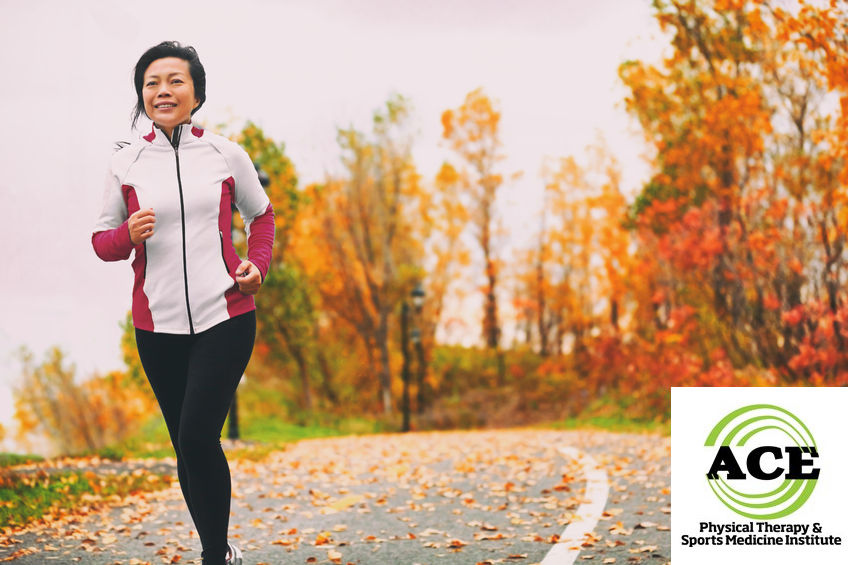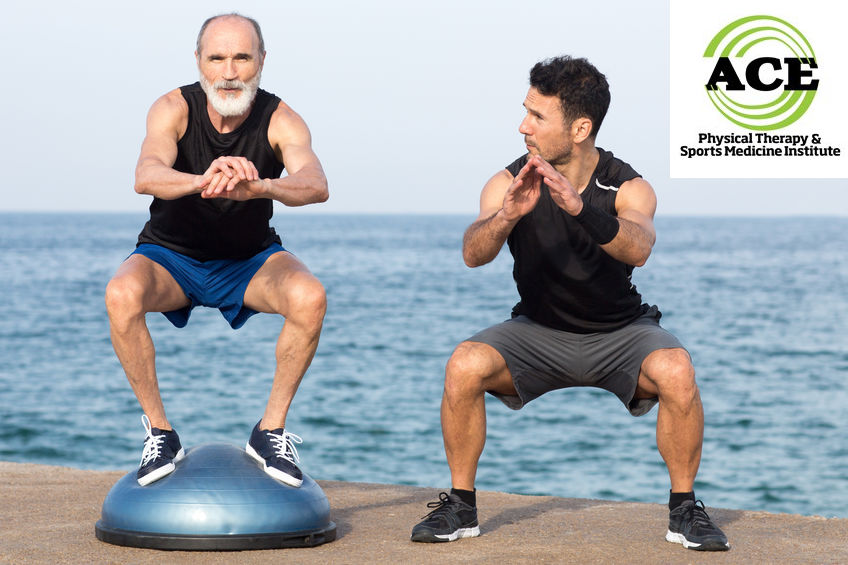AVOID INJURIES IN THE OLDER RUNNER

Tid Bits of Info
- Studies have shown a Masters runner Achilles tendon to be 20% less stiff than someone under the age of 35.
- Masters running is a male or female over the age of 40.
- Masters runners who are competitive should not run more than 70 miles per week.
- Masters runners have to strength train their core and entire full body musculoskeletal system.
- If you get injured, seek the advice and treatment of a Physical Therapist.
For many people, running provides stress relief, revitalization, and simple pleasure. This delight in running can continue long after we pass 50 years, 60 years, and even 70 years. The older runner can continue to enjoy the sport and even place in competitive running, but the risk for injury can potentially increase due to the effects of aging on the body. By following the suggestions below, the older runner can minimize the possibility of injury.
Sometimes known as Master Runners, aging runners face a strong likelihood of developing some kind of musculoskeletal pain as they condition themselves. The most prominent area for an injury to occur is the posterior chain musculature of the legs. The calf muscles and hamstrings are susceptible to injury due to several factors. The Achilles tendon is injured more frequently than any other area in the lower extremities. There is no definitive reason for this but the tendons lose some of their ability to generate and transfer force to the muscle during the aging process. The tendons lose some of the natural “stiffness” as they age. When the tendon is less stiff, they have to “work” harder to transmit the force to the muscle. This might be one of the primary reasons that many Masters Runners suffer from tendinopathy conditions. Secondly, when an elderly person ages there is a natural loss of strength due to loss of muscle cell size. Studies have reported a loss of 50% of strength from the age of 50 to 80 when the person does not participate in a strengthening program.

The Masters runner must perform a strengthening program to prevent injuries.
Strength training: the use of strengthening exercises will help to maintain muscle strength and condition the tendon to withstand more force. Slow and heavy training is the way to go. Tendons and muscle respond well to heavy resistances and eccentric (elongating) contractions.
Stretching: This has never been proven to reduce the frequency of injuries and in most instances the posterior chain musculature is too taut. Stretching these muscles is ill advised but strengthening them is a necessity. Dynamic stretching before a workout or run should be incorporated into the routine. These stretches have been shown to enhance flexibility of the joints and soft tissues by increasing blood flow, tissue temperature and reducing fluid viscosity. These stretching techniques utilize movements that are similar to those that will be used during the actual competition/event.
History: Be sure the Master runner has not been taking certain medications. Some medications can pre-dispose them to tendinopathy conditions.
Be patient: Healing damaged tendons takes a long time and the time period is longer for an older tendon. It is not uncommon for the process to take a minimum of 6 months.
Stable surfaces: Running on stable surfaces is better for the Master runner. Surfaces like sand and soft surfaces make the muscles and tendons “work” harder. The increase in “work” can lead to an injury.
If you are a older runner and develop pain in the musculoskeletal system, seek help from a Physical Therapist. These licensed professionals are well prepared to evaluate and treat these conditions. You can visit a Physical Therapist without a doctor’s prescription, but your insurance plan might require you to have a referral from your general practitioner.
Running at the Master level is not necessarily a bad thing, but the proper precautions must be taken to prevent injuries. Stay strong to help reduce the incidence of musculoskeletal injuries and avoid overloading the posterior chain musculature during your workouts.
























